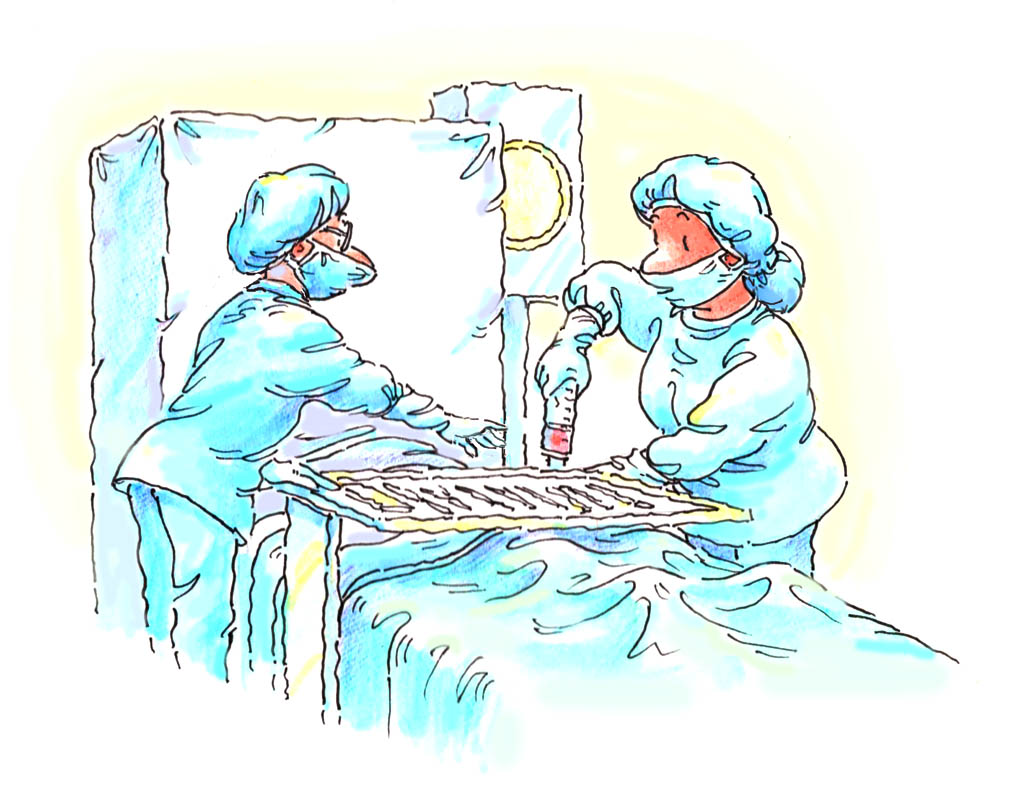How Blood Stem Cells are Collected
Historically, bone marrow was the only source of stem cells for a transplant. Today, stem cells collected from the bloodstream are used more often than bone marrow.
Collecting Blood Stem Cells from the Bloodstream
 The largest concentration of blood stem cells is in the bone marrow. However, the blood stem cells can be moved or "mobilized" out of the bone marrow into the bloodstream (peripheral blood), where they can be easily collected. The procedure to collect stem cells from the bloodstream is called a peripheral blood stem cell collection, harvest, or leukapheresis. The collection is not a surgical procedure and is usually done in an outpatient clinic.
The largest concentration of blood stem cells is in the bone marrow. However, the blood stem cells can be moved or "mobilized" out of the bone marrow into the bloodstream (peripheral blood), where they can be easily collected. The procedure to collect stem cells from the bloodstream is called a peripheral blood stem cell collection, harvest, or leukapheresis. The collection is not a surgical procedure and is usually done in an outpatient clinic.
Prior to the harvest, you will receive daily injections of granulocyte colony-stimulating factor (G-CSF) to move or 'mobilize' stem cells out of the bone marrow into the bloodstream. If it is not possible to gather sufficient stem cells using G-CSF alone, drugs such as plerixafor or motixafortide may be given.
The medicine used to move the stem cells from your bone marrow into your bloodstream can cause aching and some discomfort in your lower back and hips. The pain is similar to the body aches you may experience with the flu and usually ends when the daily injections stop.
When it is time to collect the stem cells, you will sit in a comfortable chair.
- A needle connected to flexible tubing will be inserted into a vein in each arm.
- Blood will be withdrawn from one arm and passed through a machine that separates out the stem cells.
- The rest of your blood will be returned to you through flexible tubing that is connected to the needle that was inserted in your other arm.
If you have small arm veins, stem cells can be collected through special flexible tubing inserted into a large vein near the groin or under the collarbone.
Depending on the number of stem cells collected during each session, it can take one to five days to collect enough stem cells for transplantation.
Some people feel lightheaded, cold or numb around the lips during the collection. Others experience cramping in their hands that is caused by a blood-thinning agent used during the procedure which reduces the level of calcium in the blood. The cramping usually resolves after treatment with calcium supplements or temporarily stopping the procedure.
Other possible short-term side effects include bone pain, headache, fatigue, and nausea.
Collecting Blood Stem Cells from the Bone Marrow
In some cases, the transplant team will prefer to collect bone marrow, rather than stem cells from the bloodstream for the transplant.
This type of stem cell collection is called bone marrow harvest. It is a surgical procedure that takes place in a hospital operating room.
While you are under general or spinal anesthesia or moderate sedation, a needle will be inserted into your rear hip bone where a large quantity of bone marrow is located. The bone marrow, a thick red liquid, is extracted with a syringe. The bone marrow can then be frozen until the day of transplant.
quantity of bone marrow is located. The bone marrow, a thick red liquid, is extracted with a syringe. The bone marrow can then be frozen until the day of transplant.
Several skin punctures on each hip and multiple bone punctures will be required to extract sufficient bone marrow. There are no surgical incisions or stitches involved, only skin punctures where the needle was inserted, which will be covered with a sterile bandage.
The amount of bone marrow harvested depends on the weight of the transplant patient and the concentration of blood stem cells in your marrow.
Typically one to two quarts of marrow and blood are harvested. While this may sound like a lot, your body can usually replace it in four weeks.
When the anesthesia wears off, you may feel some discomfort at the harvest site. The pain will be similar to that associated with a hard fall on the ice and can usually be controlled with acetaminophen (Tylenol®).
Most people can resume normal activities in a few days, although activities such as climbing stairs or sitting in one place for a long period of time may be uncomfortable for a week or two. You will also be advised to avoid heavy lifting for two weeks.


